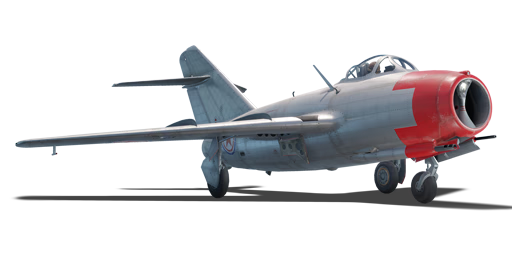



Shortly after the first generation Soviet jet fighters were entering service, the plans for far more improved "second generation" fighters were already underway. Mikoyan OKB would begin testing swept wing designs on their MiG-8 prototype before a major breakthrough in aviation technology occurred in the Soviet Union: the United Kingdom not only authorized the sale of their latest and highly advanced Rolls-Royce Nene and Derwent engines, but also sold a license for production to the Soviets to produce them as the RD-45 and RD-500 respectively. As such, all new second generation fighter projects quickly restarted and drew up new designs to use these new engines. Mikoyan was no exception, with their I-310 prototype utilizing a 35 degree swept wing on a high-tailplane airframe powered by a single RD-45 engine. In the end, this design and Lavochkin's Project 174 ended up beating Yakovlev's heavily delayed Yak-30, and were chosen as the Soviet Union's second-generation jet fighters, entering production as the MiG-15 and La-15 respectively. The MiG-15 would go on to serve a very long and fruitful life with many countries all around the world and would be produced in other regions of the world (both with and without a license) as the Lim-1 in Poland, the S-102 in Czechoslovakia, and the J-2 in China.
The MiG-15 (NATO reporting name: Fagot) was introduced in Update 1.35 as the top rank Soviet jet at the time, as a competitive contemporary to the F-86F-25. The MiG-15 is characterized by its above-average energy parameters for its battle rating, its hard-hitting but sparse armament which can be tricky to new pilots, and its abysmal roll-rate compared to all of its adversaries. The MiG-15 has strong energy fighting characteristics, but can turn fight some of its adversaries if the need arises due to its flight performance. Players who enjoy this aircraft and master its characteristics are advised to research the foldered variant, the upgraded MiG-15bis. The MiG-15bis will reward its pilots with far stronger engines and better energy management during dogfights over the normal MiG-15, allowing its pilots more options and energy-reliant manoeuvres to use during an engagement.
flaps
flaps
flaps
brake
| Belt | Belt filling | Armor penetration (mm) at a distance: | |||||
|---|---|---|---|---|---|---|---|
| 10 m | 100 m | 500 m | 1000 m | 1500 m | 2000 m | ||
| HEFI-T/HEFI-T/API-T | 49 | 47 | 39 | 32 | 26 | 21 | |
| HEFI-T/HEF-I/HEF-I | 6 | 6 | 5 | 4 | 3 | 3 | |
| API-T | 49 | 47 | 39 | 32 | 26 | 21 | |
| Belt | Belt filling | Armor penetration (mm) at a distance: | |||||
|---|---|---|---|---|---|---|---|
| 10 m | 100 m | 500 m | 1000 m | 1500 m | 2000 m | ||
| AP-I/FI-T | 32 | 30 | 22 | 15 | 10 | 7 | |
| FI-T/AP-I/AP-I/AP-I | 32 | 30 | 22 | 15 | 10 | 7 | |
| FI-T/FI-T/FI-T/AP-I | 32 | 30 | 22 | 15 | 10 | 7 | |
| AP-I | 32 | 30 | 22 | 15 | 10 | 7 | |












Flight performance | |
|---|---|
Survivability |
|---|
Weaponry | |
|---|---|